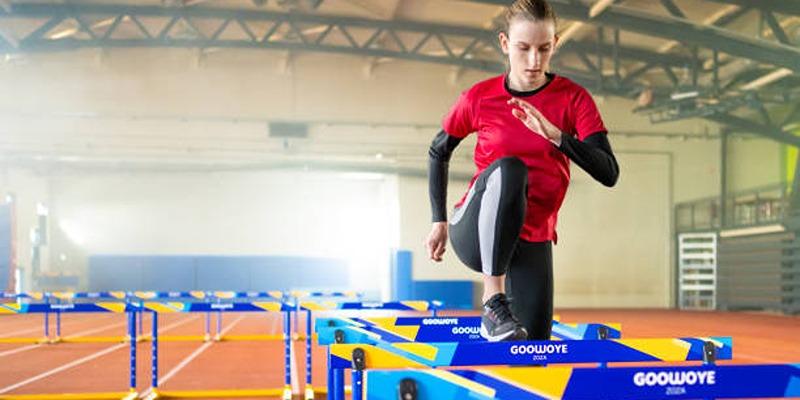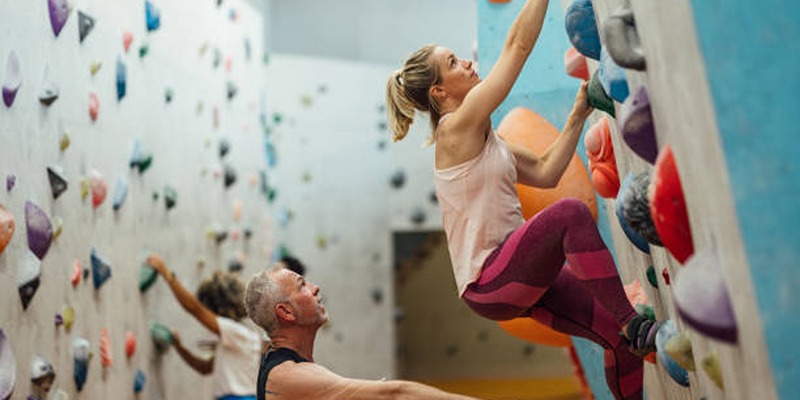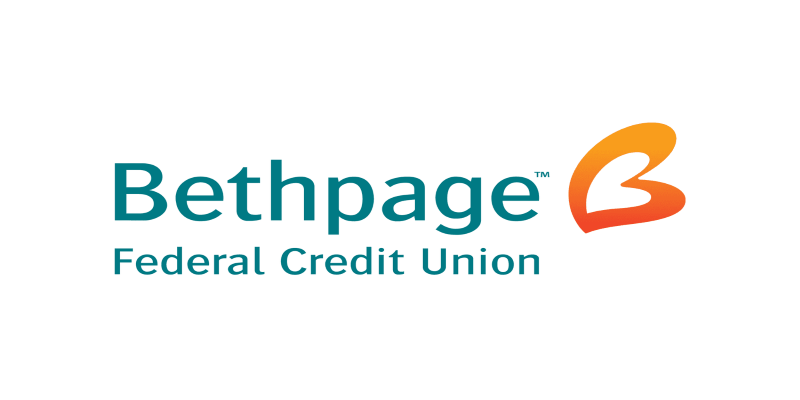How to Break Gym Plateaus and Boost Workout Progress
It is frustrating to get to a fitness plateau. You eat healthy, work out routinely, and seemingly have a structured life yet, you find yourself stagnating and lost in terms of training. False plateaus are common to all serious dieters, but they do not have to bring your progress to a halt. It means why they take place and how to change conditions to move forward is the certain idea regarding these obstacles. Although the fitness experts have not sworn it to me, I have scoured the research on the best techniques for shedding those extra pounds and performing to the best of each athletes potential.
Why Do Plateaus Happen?
 Fitness plateaus are a result of the fact that your body gets used to the exercises so much that it can perform them effortlessly. At first that is at the beginning of a training regime, your muscles are stimulated in response to the type of exercise and this makes a quantity difference. But as perform the same movements after some time, your body catches up to the task and requires less energy to perform the same set of movements. Lack of resources results in the slow pace of work being carried out in a particular project.
Fitness plateaus are a result of the fact that your body gets used to the exercises so much that it can perform them effortlessly. At first that is at the beginning of a training regime, your muscles are stimulated in response to the type of exercise and this makes a quantity difference. But as perform the same movements after some time, your body catches up to the task and requires less energy to perform the same set of movements. Lack of resources results in the slow pace of work being carried out in a particular project.
Other common reasons include:
- Lack of variety in workouts: Repeating the same exercises limits muscle engagement.
- Inadequate recovery: Overtraining prevents muscles from repairing and growing.
- Improper nutrition: Insufficient nutrients hinder energy and recovery.
- Unrealistic goals: Pushing beyond your limits without clear milestones leads to burnout.
Understanding these factors helps you create a plan to overcome plateaus effectively.
2. Reassess and Refine Your Goals
Reevaluating your fitness goals is essential to ensure they align with your progress and aspirations.
Set SMART Goals
Revisit your fitness objectives and ensure they are SMART: Specific, Measurable, Achievable, Relevant, and Time-bound. Clear, actionable goals keep you focused and motivated. For instance, instead of a vague goal like get stronger, aim for increase my bench press by 15 pounds within three months.
Break Down Big Goals
Large goals can feel overwhelming. Break them into smaller milestones. For example, if you aim to run a 10K, start by improving your 5K time, then gradually build distance and endurance.
3. Shake Up Your Workout Routine
Ready to take your fitness journey to the next level? It's time to shake up your workout routine and introduce some exciting changes that will keep your body challenged and your progress constant.
Introduce New Exercises
Variety is essential for continuous progress. Swap out familiar exercises for new ones that target the same muscles in different ways. For example, replace barbell squats with Bulgarian split squats or add kettlebell swings for explosive power.
Change Workout Variables
Adjust the intensity, volume, and structure of your workouts. Modify one or more of these variables:
- Increase or decrease the number of sets and reps.
- Incorporate drop sets or supersets.
- Adjust rest periods between exercises.
Changing these elements forces your body to adapt, stimulating progress.
Explore Advanced Techniques
Advanced techniques like tempo training (slowing down the eccentric phase of an exercise) or pyramid sets can reignite muscle growth. Experiment with different training modalities to challenge your body.
4. Focus on Progressive Overload
To maximize your fitness gains, it's essential to focus on progressive overload, a fundamental principle that drives muscle growth and strength gains.
What Is Progressive Overload?
Progressive overload is a foundational principle of fitness. It involves gradually increasing the stress placed on your muscles to encourage adaptation and growth.
Practical Ways to Apply It
- Add weight to your lifts incrementally.
- Increase the number of reps or sets.
- Reduce rest times between exercises.
- Incorporate resistance bands for additional tension.
Tracking your progress ensures youre consistently challenging yourself without overtraining.
5. Prioritize Recovery
Prioritize Recovery: Recharge for Optimal Performance
Optimize Sleep
Recovery starts with sleep. Aim for 7-9 hours of quality rest each night. Sleep supports muscle repair, hormonal balance, and mental clarity, all of which are crucial for performance.
Embrace Active Recovery
On rest days, engage in low-impact activities like yoga, stretching, or brisk walking. Active recovery promotes blood flow and reduces muscle soreness without overloading your body.
6. Enhance Your Nutrition
Elevating your nutrition is a key aspect of maximizing your performance and achieving your fitness goals. Ensuring that you fuel your body with the right nutrients and optimize your eating habits can make a significant difference in your overall athletic performance and recovery.
Fuel for Performance
Your diet plays a significant role in overcoming plateaus. Ensure you consume enough macronutrients:
- Proteins repair and build muscle. Include chicken, fish, eggs, tofu, or lentils.
- Carbohydrates provide energy for intense workouts. Opt for whole grains, fruits, and vegetables.
- Healthy fats support hormonal balance. Incorporate nuts, seeds, avocados, and olive oil.
7. Incorporate Cross-Training
Incorporate cross-training to diversify your workouts and enhance overall fitness.
What Is Cross-Training?
Cross-training involves participating in different types of physical activities to complement your primary workout routine. It enhances overall fitness and reduces the risk of overuse injuries.
Examples of Cross-Training Activities
- Runners can add swimming or cycling to build endurance while reducing joint impact.
- Strength trainers might benefit from yoga to improve flexibility and balance.
Cross-training keeps workouts engaging and helps you develop well-rounded fitness.
8. Stay Mentally Engaged
 Stay mentally engaged by setting goals, tracking progress, and embracing the journey.
Stay mentally engaged by setting goals, tracking progress, and embracing the journey.
Focus on Mindset
Plateaus often test your patience and resolve. Stay motivated by reminding yourself of your progress and the long-term benefits of your efforts.
Find a Support System
A workout buddy, fitness group, or personal trainer can provide accountability and encouragement. Surrounding yourself with like-minded individuals boosts morale and consistency.
9. Leverage Technology
In today's digital age, technology plays a crucial role in supporting and enhancing our fitness journeys.
Fitness Apps and Trackers
Apps like MyFitnessPal, Strava, or Fitbit help monitor your progress, suggest improvements, and keep you on track. They also offer valuable insights into your fitness habits.
Wearables
Smartwatches and fitness bands track metrics like heart rate, calories burned, and sleep quality. These devices provide real-time feedback, allowing you to make informed adjustments.
10. Seek Professional Guidance
Seeking Professional Guidance: Taking your fitness journey to the next level.
Hire a Trainer
A certified personal trainer can evaluate your performance, identify weaknesses, and design a personalized plan to break through plateaus.
Conclusion
Overcoming fitness plateaus requires patience, adaptability, and strategic planning. By reassessing your goals, introducing variety, prioritizing recovery, and staying consistent, you can push past stagnation and continue progressing. Plateaus are a natural part of any fitness journey, but they also present an opportunity to learn, grow, and challenge yourself. Stay committed, embrace the process, and celebrate every step forward. Your persistence will pay off in the long run.










